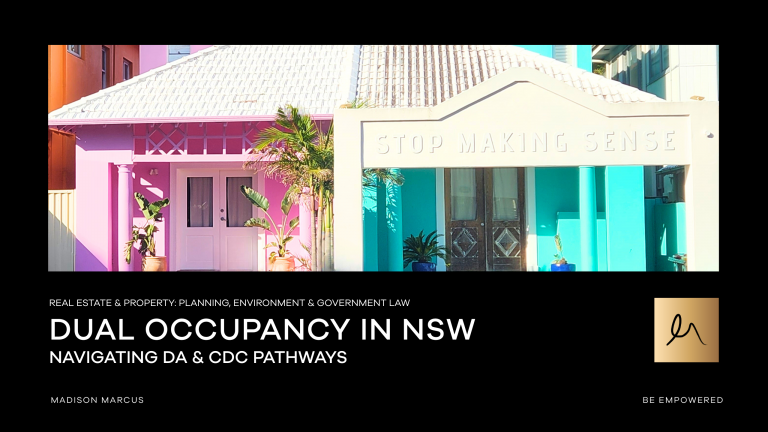EXISTING USE RIGHTS
Article written by Michael Mantei, Monday 11 July 2022
A roadside fruit and vegetable store in the Penrith suburb of Llandillo is the subject of the latest NSW Land and Environment Court decision involving existing use rights. The case is cited as Agostino v Penrith City Council [2022] NSWLEC 1258 and is a decision of Commissioner Gray of the Land and Environment Court.
Existing use rights under the Environmental Planning and Assessment Act 1979 apply when a lawful use becomes prohibited by a change in planning controls (s4.65 EP&A Act). An existing use right trumps a prohibition in a local environmental plan. Regulations made under the EP&A Act enable an “existing use” to be altered, enlarged, rebuilt and in some circumstances, changed to another use, with development consent. Existing use rights have a long and detailed history in planning law. It is one of only a handful of planning law issues considered by the High Court.
The controversy in Agostino involved a development application for alterations and additions to a fruit and vegetable store, including the use of an existing shed for the storage of fruit and vegetables pending sale in the store. Penrith City Council refused the application. Mr Agostino appealed the decision to the Land and Environment Court.
A fruit and vegetable shop lawfully existed on the site since the 1980s. The judgement records that the site was at the time of the decision located in zoned RU4 Primary Production Small Lots under Penrith Local Environmental Plan 2010 (“PLEP2010”). The use of the site at that time was characterised for planning law purposes as a “shop”. Development for the purposes of shops were prohibited in the RU4 zone. Shops became a prohibited use on the land when Penrith Local Environmental Pan 2010 commenced on 22 September 2010. Since then the site enjoyed existing use rights for the purposes of a fruit and vegetable store, most recently under section 4.65 of the EP&A Act.
The dispute between the parties was whether the application satisfied the precondition for permissibility in clauses 41 and 42 of the Environmental Planning and Assessment Regulation 2000. Those provisions required the proposed development to be “carried out only on the land on which the existing use was carried out immediately before the relevant date”. This in turn required determination of the “unit of land” to which the existing use right applied. Mr Agostino claimed that the unit of land comprised the whole of his site. The Council claimed that the unit of land was confined to a part of the site subject to earlier evelopment consents, and did not include the existing shed.
The Commissioner drew on established line of authority that “land can be used for a lawful purpose without there being an actual physical use of it; that if the land is rightly regarded as a unit and it is found that part of its area was physically used for the purpose in question it follows that the land was used for that purpose” (Steedman v Baulkham Hills Shire Council (No.1) (1991) 87 LGERA 26). Steedman has been followed and developed in numerous subsequent cases, including Seraglio v Shoalhaven City Council [2017] NSWLEC 45. The Commissioner also cited another significant principle that where an existing use arises from a development consent, the “land to which that consent is expressed to relate will usually determine the unit of land upon which the existing use is carried out” (Brinara Pty Ltd v Gosford City Council [2010] NSWLEC 230).
In Agostino the Court agreed with the Council that the existing use did not apply to the whole of the site. The mere fact that the whole of the deposited plan allotment is referred to in the determination of an earlier consent was not sufficient to establish that the whole site was the land to which the existing use applied in accordance with s 4.65(b) of the EPA Act. The farm shed consent authorised only the construction and use of the shed itself and not its use for the purposes of the fruit and vegetable store. The dwelling house and the other areas of the site used for horticulture were
separate and independent uses on the site. The result was that the Court granted a partial approval for the proposed development excluding the use of the shed and refused the use of the shed.
The Court’s judgement in Agostino is an example of how existing use rights are applied in cases where an existing use arises from an historical development consent. The case demonstrates that not all existing uses enjoy existing use rights. If the name of the applicant in this case looks familiar, it is. Mr Agostino was also the applicant in Agostino v Penrith City Council [2010] NSWCA 20, a decision of the NSW Court of Appeal on the difference between a development standard and prohibition.
Madison Marcus is a national, multi-disciplined law and advisory firm committed to providing premium legal and business services. We guide our clients throughout the whole process, and we make sure to give them the best solutions.
Call 131 LAW (529)







